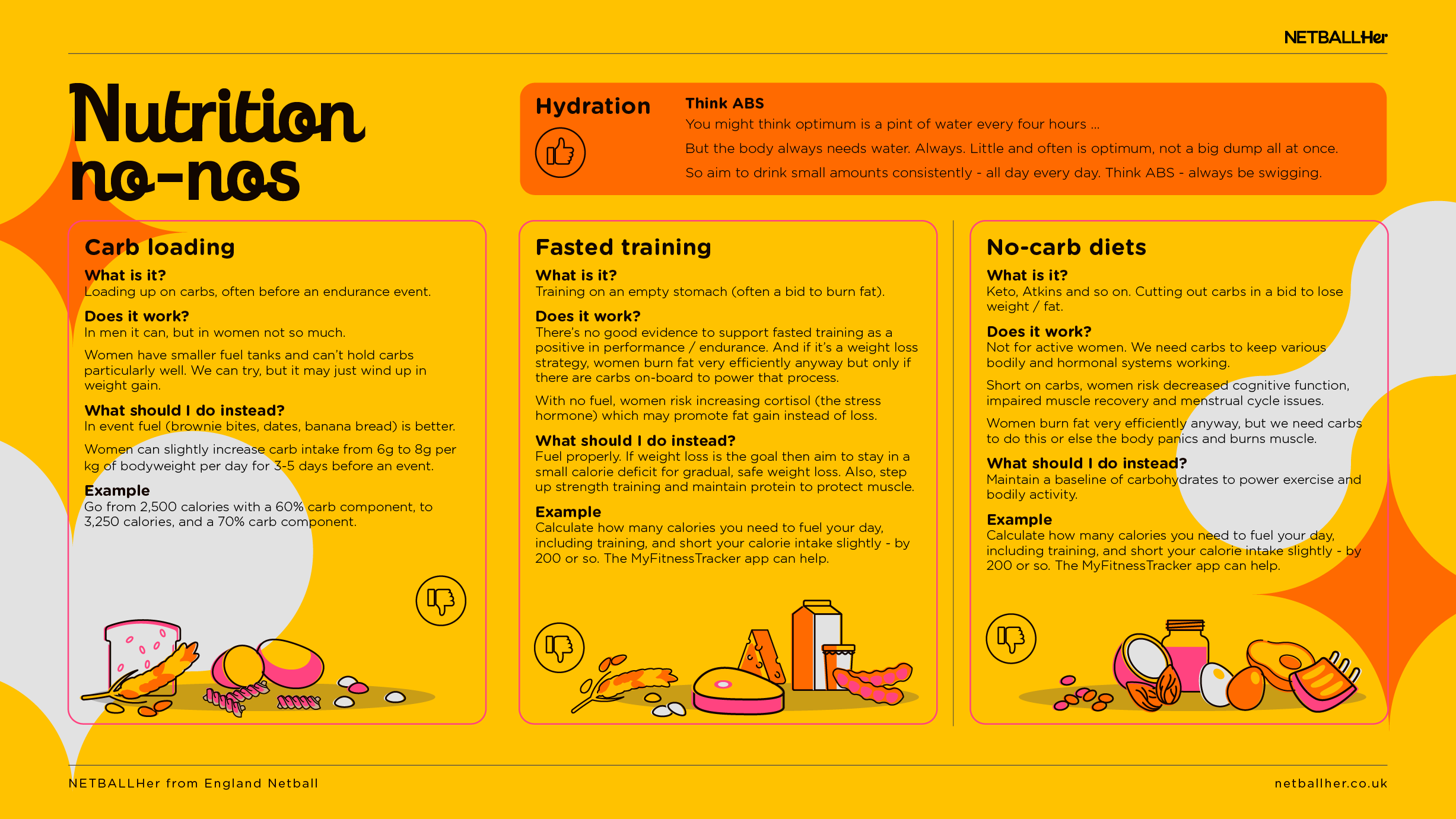Click play for an audio readthrough of this article
A staple in big event preparation and it works a treat … unless you’re female
If you’re into sports then no doubt you’ve heard of carb-loading.
A quick recap, carb-loading is for the days leading up to an event; commonly an endurance event. Think a marathon, triathlon, or a multi-game netball tournament.
Carb-loading is when, as you taper off your training regimen, you fill your muscles right up to the brim with carbs. You eat tonnes of it – pasta, potatoes, rice and what have you – and it all gets stored in your muscles as glycogen. Precious glycogen you’ll use as fuel.
If you’re male, the evidence is on your side. Carb-loading is a great strategy for exercise that lasts more than 90-minutes. Research draws a positive correlation between the quantity of glycogen stored in the muscles and performance in endurance sports.
A carb-loading study in men, in fact, showed that the practice yielded a 40% increase in muscle glycogen, along with a 45% increase in performance.
Pretty amazing … if you’re male.
Why d’you keep saying ‘if you’re male’?
By now you’ve probably guessed that the benefits of carb-loading are much less clear-cut for women. In fact, it is much more difficult to achieve carb loading results for women.
In a study of a group of active women who followed the same carb-loading regimen, guess how much more muscle glycogen they stored?
That’s right – none.
Now, guess how big of an increase there was in the women’s performance.
Right again – none. Zip. Zero.
So carb-loading doesn’t work?
For women – not really. Here’s why …
Carb loading works for men because they tend to eat more and thus their actual carb intake is greater. Women don’t need to eat as much, so it’s harder for them to stuff in and hold enough carbs that the results are any kind of useful. In practice, then, carb-loading for women is really hard because they’d have to eat more than 30% extra food every day just to match the men and get that performance-enhancing effect, which would in reality actually lead to weight gain rather than better performance.
What should I do instead?
Instead of stuffing yourself full of potatoes before an event, it’s better to steadily ensure there’s sufficient (not excessive) carbs in your diet as you taper your training off in the week or so before you compete.
This should yield enough glycogen in your muscles to get you through your endurance event.
Having said that, if you want to be sure then feel free to slightly increase your carb intake in the three to five days leading up to game day. Specifically, up your carbs from 6g to 8g per kg of bodyweight per day and increase your calories in other food groups too.
As an example, you might go from 2,500 calories with a 60% carb component, to 3,250 calories, and a 70% carb component.
What should I do instead?
A key way to increase your stores of available energy for your event is in-play fuel. It’s fuel on-the-go.
First thing to say here is forget energy gels. They mostly taste horrible and they don’t absorb particularly well. Instead, if possible, use real food. Try brownie bites or little peanut butter sandwiches or jelly or dates or banana bread or flapjacks. All of these will efficiently fuel your muscles and yield extra energy while you’re in-action.
Sure, exercising while eating / eating while exercising can be a troubling combo and a fast-track to bloating, nausea, pain and discomfort. So make sure to practice with different bite-size boosters before the event so you can figure out what works best for you sans bellyache.
What a load of …
In a nutshell carb loading works for some people, but they’re not us people … women need to constantly and consistently fuel with carbs so the aim of the game is not a big dump all at once, but a measured and steady increase, with in-event top-ups.
As a reminder, the content of the course belongs to The Well HQ. You have permission to access and use the content yourself or, if you are an organisation, for the number of users selected, but are not otherwise permitted to share such content with others, all in accordance with our Course Terms and Conditions.


